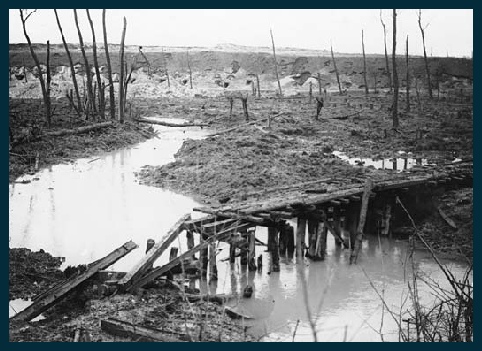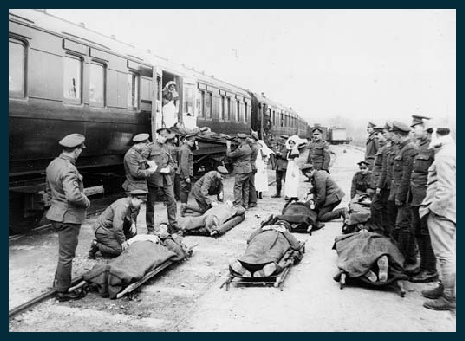Copyright © All rights reserved.




Fred Swales
Fred Swales was born in Settrington in the second quarter of 1896 and his birth registered in Malton. He was the fourth son of Thomas and Ann (nee Arnott) Swales who married in the Helmsley area in the second quarter of 1874. In 1901 Thomas and Ann were living in Settrington, where he worked as an agricultural labourer, with their five children and a teenage niece.
1901 Census – resident at Village, Settrington
SWALES, Thomas, Head, Married, M, 48, Agricultural Labourer, Pockley Yorkshire,
SWALES, Ann, Wife, Married, F, 48, , Settrington Yorkshire,
SWALES, Mary Ann, Daughter, Single, F, 25, Dressmaker, Settrington Yorkshire,
SWALES, Selina, Daughter, Single, F, 17, Domestic Servant, Settrington Yorkshire,
SWALES, Annie, Daughter, Single, F, 12, , Settrington Yorkshire,
SWALES, Thomas, Son, , M, 7, , Settrington Yorkshire,
SWALES, Fred, Son, , M, 4, , Settrington Yorkshire,
COLLIER, Florence Emily, Niece, , F, 13, Apprentice Dressmaker, Helmsley Yorkshire,
By the time of the 1911 census the family had moved to Birdsall where Thomas was working as a cowman and Fred as a gardener.
SWALES, Thomas, Head, Married, M, 58, Cowman On Farm, Yorks Pockley,
SWALES, Ann, Wife, Married 35 years, F, 58, , Yorks Settrington,
SWALES, Mary, Daughter, Single, F, 34, , Yorks Settrington,
SWALES, Fred, Son, , M, 14, Gardener Domestic, Yorks Settrington,
SWALES, Laura, Granddaughter, , F, 4, , Yorks Acklam,
In the second quarter of 1915 Fred married Emily Brown in the Malton area and they lived in Saville Street, Malton. Before he was called up Fred worked for the N. E. R. as Relief Staff. Fred and Emily do not seem to have had any children and after Fred’s death Emily seems to have re-
Fred was probably called up in 1916 and seems to have joined the East Yorkshire Regiment, possibly the 9th (Reserve) Battalion that was formed in York on 9 November 1914 as a Service battalion and became a Reserve Battalion on 10 April 1915. The battalion moved in May 1915 to Harrogate and in September of that year to Rugeley Camp, Cannock Chase before it was converted into 7th Training Reserve Battalion in 2nd Reserve Brigade on 1 September 1916. From there it is likely that he was part of one of the drafts of men sent to 2/4 Battalion of the York & Lancaster Regiment in the summer of 1917.
At the beginning of July 1917 the Battalion was based near Irles about eight miles north-
the need for this activity in a war where railway transport of men and materials was vital. Later in the month they went into the trenches, alternating between front line and reserves. September found them in camp before returning to the front line on the 14th.
Here they came under heavy barrages both from shells and machine gun fire but casualties were mercifully slight, and later in the month they returned to camp and the round of training, drill and parades, the highlight of existence being visits to the baths. This pattern continued in October, until they set off on a series of night marches on 30th October that finally brought them to Havringcourt on 19th November. Here they found themselves part of an operation designed to break through the Hindenburg Line and open a route for the cavalry regiments to get behind the German defences. The taking of Havrincourt was part of the opening phase of the Battle of Cambrai), when tanks were used in a coordinated way for the first time. On the night of 19–20 November, soldiers of the 62nd (2nd West Riding) Division prepared for the event in Havrincourt Wood part of which had been felled as part of the front of the Hindenburg Line and was occupied by an artillery battery. The Tank Corps mustered behind the battery, in the south-
The following day after time spent cleaning up equipment etc. the battalion moved to Bourlon Wood where they remained in support of an unsuccessful attack on Bourlon village by the rest of the brigade.
December was uneventful, seeing the arrival of new drafts and the award of honours to several members of the battalion. January 1918 saw them back in the trenches, largely carrying out improvement work, though they occasionally came under shell and machinegun fire. Casualties however were low. In February they continued working under supervision of the Royal Engineers on improving trenches and renewing wiring.
The German Offensive began on March 21st 1918 at a time when the 62nd Division held the line in the Acheville and Arleux sectors in front of Vimy, seven miles North of Arras. On March 23rd the battalion marched south and spent the night at Arras. The town was under bombardment and an attack was feared so on the 24th the battalion moved forwards but they were not called on to fight. On the 25th they were ordered to join the rest of the 62nd Division at Bucquoy. To get there they had to make a forced march by night on roads that were heavily congested with the transports and guns of the retreating army. They arrived at Bucquoy at 2.00 a.m. on March 26th and took up positions on the left of Rossignol Wood. They immediately came under fire from enemy machine guns which had moved into the front edge of Rossignol Wood. On the 27th they moved to the right, taking a position on the flank and shortly afterwards the German forces took Rossignol Wood . The British tanks attacked the wood to no avail. The following day the brigade again attacked Rossignol Wood unsuccessfully. The fighting continued to the end of the month with no real gains on either side, but with the battalion suffering casualties 17 dead and about 110 wounded or missing. April and May were quiet months mainly spent in consolidation and training. They returned to the front line in June, but again things were very quiet and they suffered minimal casualties.
For the first fortnight in July the battalion was in reserve at Couin before moving to the front and arriving at Bois d’Ecuiel at 4.00 a.m. on 20th July after a week of marching. By 8.00 a.m. “Despite the trying march up and little rest the Bn. Jumped up in good spirits” They were coming under heavy fire and “D” company, in particular took heavy casualties but the advance continued, taking several German machine guns and about 20 prisoners. Fighting contnued for the next two days – the battalion failed to take Commetreuil Cahteau and sustained heavy casualties from enfiladed machine gun fire before forming a defensive flank along the Courmas to Bouilly road. Over the four days of fighting 51 members of the battalion were killed or died of wounds and 316 were wounded or missing. One of the five men who died of wounds was Fred Swales. To judge by the cemetery records, he was taken to the Auban hospital in Epernay where he died on 21st July 1918.
Emily received official information of his death from wounds received in action at the beginning of August. Fred was buried in Epernay military cemetery but after the war was reburied in Terlincthun British cemetery at Wimille.

